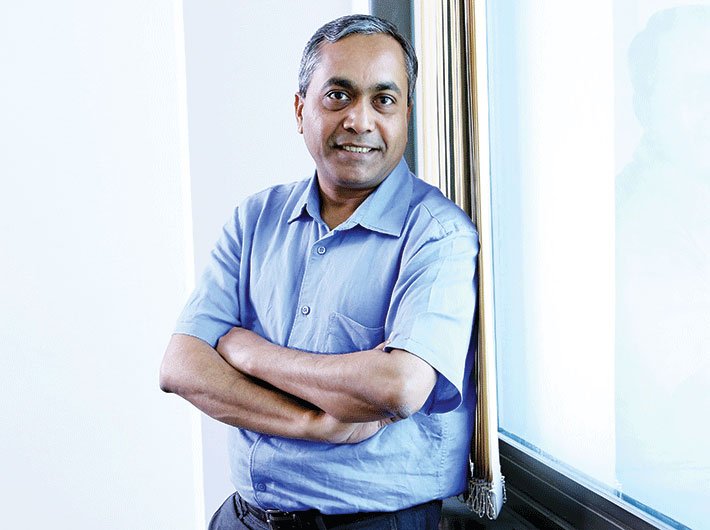Health economist Sakthivel Selvaraj explains the inner mechanics of the DPCO and speaks on why pharma companies are so keen to see a market free of pricing control
Professor Sakthivel Selvaraj is a health economist who teaches at the Public Health Foundation of India and researches matters concerning financing of healthcare and pharmaceutical economics in India. In an edifying chat with Kaushal Shroff, he explains the inner mechanics of the DPCO and speaks on why pharma companies are so keen to see a market free of pricing control.
Why do we need price control?
The first comprehensive price control was put in place way back in 1979 with almost 90 percent of the market under the price control. They had what is called the cost-plus based pricing but over the years – in 1986 and 1995 – the ambit of price control decreased.
It declined so much that in 2013 just before the new policy was announced, only 10 percent of the market was actually controlled. Meanwhile, many civil society groups and some of us in academia have been arguing that while most products and public services are regulated and considering the uniqueness of the pharmaceutical sector – it is not a typical commodity – it should continue to be regulated.
We have been arguing with evidence in the supreme court that more pharmaceutical products should be put under price control. In 2011-12, the SC wanted the government to bring in more products under price control. So, they asked the government to modify the 2011 NLEM. Well, now the government has come out with a new NLEM.
Academics and civil society activists often object to market-based pricing vis-à-vis cost-based pricing. Why?
In 2011, having brought the essential medicines under price control, the government decided to change its mechanism from cost-plus based pricing to market-based pricing (MBP). It is a very unique pricing mechanism. No other country has it.
What MBP intends to do is single out all companies producing a single therapeutic product, let’s say, any product that is part of the NLEM. For any product, if there are 100 companies, those companies which have 1 percent or more market share will be considered under price control mechanism while those having less than 1 percent will not. All those with 1 percent or more market share, their prices will be put together; simple average of all the prices would be taken into account. That is the way MBP works.
Essentially speaking, our own evidence from the IMS data shows that 50 percent of the market is oligopolistic in nature – in the sense that only about three to four players, who have anywhere from 60 to 80 percent of the market share, dominate. In the other 25 percent of the market, moderate competition or monopolistic conditions exist. Therefore, competition really exists only in about 25 percent of the market. This is the major fallacy in market-based pricing.
The other part is that the actual implementation of the DPCO 2013 is riddled with loopholes and limitations. Suppose the NLEM specifies only metformin 250 mg and 500 mg, then the DPCO only controls these two products. In India, it so happens that because of the lack of regulation, companies have a lot of flexibility in terms of dosage. Companies produce [pills of] 200 mg, 300 mg, 400 mg, 550 mg, and 650 mg. Since they are not part of the NLEM 2015, they [pharma companies] are free to produce any of these products. Companies are also very good at pushing these products because of the strong link they have with prescribers and dispensers.
READ: High Dose: How your medicine bill is likely to shoot up
FDCs have a major share in the Indian market, unlike other countries, and not many of them are under price control. Isn’t it creating problems of accessibility, at least in terms of cost, to the patients?
India is perhaps the only country which has a 47 percent FDC market share. I can’t think of any other country in the world which has FDC market of this magnitude. For instance, look at the global EDL – the essential drug list authored by WHO, which is updated every two years. Only 15-20 medicines out of 370 medicines are FDCs in that list, mostly in the area of HIV and to some extent in cardio-vascular diseases. But if you look in our domestic market, close to half of the drugs are FDCs.
The moment you [government] announce that these drugs are price-controlled, drug companies will happily go about formulating products with one price-regulated ingredient and other non-regulated product, making it easy for them to wriggle out of price control. As a result, we found that only about 17 percent of the market is price controlled.
FDCs have been an unregulated market for almost 65-70 years in India, which has implications for public health. One doesn’t know the drug interaction in the body and what kind of impact these cocktail molecules have. It is precisely for this reason that the US, Europe, Canada and many other countries do not allow unfettered growth of FDCs.
Indian pharmaceutical companies have often argued that they produce some of the cheapest drugs in the world. What do you have to say about this?
When a company produces in India it produces at a rock bottom price. The problem arises the moment that product comes to the retail segment or the chemist, as it becomes too expensive. This is because it goes through several layers of intermediaries. Also, there is a huge promotional cost which pharmaceutical companies – medium and large scale – are happy to [pass on] and the promotional advertisement costs are on an average 20-25 percent of the overall sales.
Another problem as to why the actual price of the product is higher compared to the ex-factory price is because India, even though a generic manufacturer, is a branded generic manufacturer.
Essentially, in other countries prescribers write a generic name. Our country has a third element called branded generics. People end up paying premium on a generic product. These are ridiculous formulations. There is hardly any difference between the two in terms of quality. In fact, there is none. So, what is the patient paying for? For the brand? That is unacceptable.
India has one of the lowest public expenditures as percentage of GDP on healthcare. We keep lagging behind a number of countries. What is wrong with our healthcare model?
In countries around the world – Europe, US, Canada, Australia, Japan and even other developing countries – the healthcare system is essentially financed by two models: One is a publicly funded/tax-funded model; the UK for instance has National Health Services. The other is something called social health insurance, [prevalent] in half of the developing world. Essentially the patient is not paying at the point of service; people are pre-paying. Largely they are paying through taxes or health insurance premium. The wealthy and the healthy are essentially subsidising the poor and the sick. That is the way in which financing mechanism operates in many countries including the US.
On an average, developed countries spend 8-9 percent of their GDP on healthcare and largely this is tax-funded or a form of social insurance. Government spending in healthcare in India is only 1 percent.
In India, two-third of the spending on healthcare comes out from you and me – out of our pocket. That is considered one of the most inefficient funding of healthcare. It is also iniquitous.
Public procurement models in Tamil Nadu and Rajasthan have often been hailed for their efficiency. What is your assessment of the medical corporations run by them?
Relatively speaking, to other states, public spending is much better in Tamil Nadu and Rajasthan. Whatever sizable amount of money they are spending on public health, about 12-13 percent goes in buying drugs. That is relatively desirable.
They also have an excellent supply chain system and their procurement model is efficient. TNMSC, RMSC and even Kerala Medical Services Corporation – all buy directly from the manufacturer, therefore cutting out all intermediaries. The manufacturer would be adding a little bit of profit and therefore it is considered more effective.
Secondly, they buy generic products and not branded generics. At the same time they make sure that quality is maintained. They do their own auditing and regulatory checks.

